京ICP备13020181号-2
© 《China Plastics》
© 《China Plastics》

China Plastics ›› 2023, Vol. 37 ›› Issue (8): 38-44.DOI: 10.19491/j.issn.1001-9278.2023.08.006
• Materials and Properties • Previous Articles Next Articles
DU Le, HU Yajie, HU Jian, SUN Tao, YUN Xueyan, DONG Tungalag( )
)
Received:2023-06-02
Online:2023-08-26
Published:2023-08-21
CLC Number:
DU Le, HU Yajie, HU Jian, SUN Tao, YUN Xueyan, DONG Tungalag. Preparation of poly (L⁃lactic acid)/chitosan films through UV curing and their thermal, mechanical and antibacterial properties[J]. China Plastics, 2023, 37(8): 38-44.
Add to citation manager EndNote|Ris|BibTeX
URL: https://www.plaschina.com.cn/EN/10.19491/j.issn.1001-9278.2023.08.006
| 样品 | Tg/ ℃ | Tcc/ ℃ | ΔHcc/ J·g-1 | Tm/ ℃ | △Hm/ J·g-1 | Xc/ % |
|---|---|---|---|---|---|---|
| PLBI | 23.4 | 68.3 | 16.1 | 135.1 | 20.8 | 5.0 |
| Cs⁃g⁃GMA | — | — | — | — | — | — |
| PLBI/Cs⁃g⁃GMA0.4 | 23.2 | 66.4 | 16.4 | 134.5 | 21.5 | 5.4 |
| PLBI/Cs⁃g⁃GMA0.6 | 23.8 | 65.8 | 12.3 | 130.7 | 19.4 | 7.6 |
| PLBI/Cs⁃g⁃GMA0.8 | 23.7 | 65.3 | 12.4 | 130.1 | 20.5 | 8.7 |
| PLBI/Cs⁃g⁃GMA1.0 | 23.6 | 65.0 | 9.1 | 131.2 | 23.7 | 15.6 |
| 样品 | Tg/ ℃ | Tcc/ ℃ | ΔHcc/ J·g-1 | Tm/ ℃ | △Hm/ J·g-1 | Xc/ % |
|---|---|---|---|---|---|---|
| PLBI | 23.4 | 68.3 | 16.1 | 135.1 | 20.8 | 5.0 |
| Cs⁃g⁃GMA | — | — | — | — | — | — |
| PLBI/Cs⁃g⁃GMA0.4 | 23.2 | 66.4 | 16.4 | 134.5 | 21.5 | 5.4 |
| PLBI/Cs⁃g⁃GMA0.6 | 23.8 | 65.8 | 12.3 | 130.7 | 19.4 | 7.6 |
| PLBI/Cs⁃g⁃GMA0.8 | 23.7 | 65.3 | 12.4 | 130.1 | 20.5 | 8.7 |
| PLBI/Cs⁃g⁃GMA1.0 | 23.6 | 65.0 | 9.1 | 131.2 | 23.7 | 15.6 |
| 样品 | 厚度/μm | 屈服强度/ MPa | 断裂 伸长率/% | 弹性模量/ MPa |
|---|---|---|---|---|
| PLBI | 48.0±0.8 | 6.1±0.3 | 214±13.8 | 197±2.0 |
| PLBI/Cs⁃g⁃GMA0.4 | 50.6±0.5 | 3.1±0.1 | 212±21.2 | 89±2.6 |
| PLBI/Cs⁃g⁃GMA0.6 | 50.2±1.4 | 2.1±0.6 | 114±12.6 | 92±7.1 |
| PLBI/Cs⁃g⁃GMA0.8 | 49.8±1.3 | 4.3±0.5 | 75±8.9 | 108±10.9 |
| PLBI/Cs⁃g⁃GMA1.0 | 50.2±1.1 | 5.9±1.3 | 67±2.9 | 140±11.2 |
| 样品 | 厚度/μm | 屈服强度/ MPa | 断裂 伸长率/% | 弹性模量/ MPa |
|---|---|---|---|---|
| PLBI | 48.0±0.8 | 6.1±0.3 | 214±13.8 | 197±2.0 |
| PLBI/Cs⁃g⁃GMA0.4 | 50.6±0.5 | 3.1±0.1 | 212±21.2 | 89±2.6 |
| PLBI/Cs⁃g⁃GMA0.6 | 50.2±1.4 | 2.1±0.6 | 114±12.6 | 92±7.1 |
| PLBI/Cs⁃g⁃GMA0.8 | 49.8±1.3 | 4.3±0.5 | 75±8.9 | 108±10.9 |
| PLBI/Cs⁃g⁃GMA1.0 | 50.2±1.1 | 5.9±1.3 | 67±2.9 | 140±11.2 |
| 组别 | 水接触角/(°) | 图像 |
|---|---|---|
| PLBI | 71.6±2.1 | 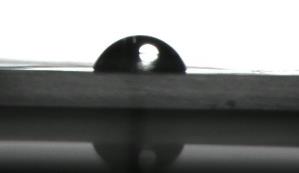 |
| PLBI/Cs⁃g⁃GMA0.4 | 46.6±1.2 | 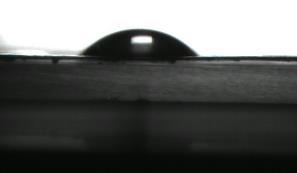 |
| PLBI/Cs⁃g⁃GMA0.6 | 45.2±0.8 | 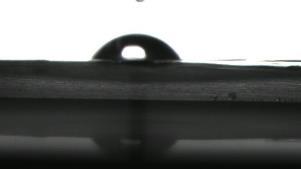 |
| PLBI/Cs⁃g⁃GMA0.8 | 44.6±1.0 | 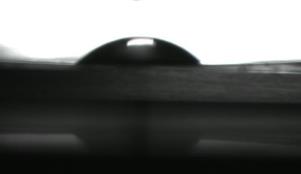 |
| PLBI/Cs⁃g⁃GMA1.0 | 40.7±1.9 | 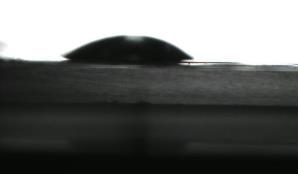 |
| 组别 | 水接触角/(°) | 图像 |
|---|---|---|
| PLBI | 71.6±2.1 |  |
| PLBI/Cs⁃g⁃GMA0.4 | 46.6±1.2 |  |
| PLBI/Cs⁃g⁃GMA0.6 | 45.2±0.8 |  |
| PLBI/Cs⁃g⁃GMA0.8 | 44.6±1.0 |  |
| PLBI/Cs⁃g⁃GMA1.0 | 40.7±1.9 |  |
| 1 | Shi J, Zhang J, Zhang Y, et al. Crystallinity dependence of PLLA hydrophilic modification during alkali hydrolysis[J]. Polymers, 2022, 15(1): 75. |
| 2 | Elsawy M A, Kim K H, Park J W, et al. Hydrolytic degradation of polylactic acid (PLA) and its composites[J]. Renewable and Sustainable Energy Reviews, 2017, 79: 1 346⁃1 352. |
| 3 | Mustafa Abu Ghalia, Dahman Yaser. Investigating the effect of multi⁃functional chain extenders on PLA/PEG copolymer properties[J]. International Journal of Biological Macromolecules,2017,95:494⁃504. |
| 4 | Kaliva M, Georgopoulou A, Dragatogiannis D A, et al. Biodegradable chitosan⁃graft⁃poly(L⁃lactide) copolymers for bone tissue engineering[J]. Polymers, 2020, 12(2): 316. |
| 5 | Rodrigues C, Mello J M M D, Dalcanton F,et al. Mechanical, thermal and antimicrobial properties of chitosan⁃based⁃nanocomposite with potential applications for food packaging[J].Journal of Polymers and the Environment, 2020, 28(4):1 216⁃1 236. |
| 6 | Fathima P E, Panda S K, Ashraf P M, et al. Polylactic acid/chitosan films for packaging of Indian white prawn (Fenneropenaeus indicus)[J]. International Journal of Biological Macromolecules, 2018, 117: 1002⁃1010. |
| 7 | Wu Y, Ma Y, Gao Y, et al. Poly (lactic acid)⁃based pH responsive membrane combined with chitosan and alizarin for food packaging[J]. International Journal of Biological Macromolecules, 2022, 214: 348⁃359. |
| 8 | Hosseini S F, Kaveh F, Schmid M. Facile fabrication of transparent high⁃barrier poly (lactic acid)⁃based bilayer films with antioxidant/antimicrobial performances[J]. Food Chemistry, 2022, 384: 132540. |
| 9 | Wei Q, Wang G, Lei M, et al. Multi⁃scale investigation on the phase miscibility of polylactic acid/o⁃carboxymethyl chitosan blends[J]. Polymer, 2019, 176: 159⁃167. |
| 10 | Lednev I, Salomatina E, Ilyina S, et al. Development of biodegradable polymer blends based on chitosan and polylactide and study of their properties[J]. Materials, 2021, 14(17): 4900. |
| 11 | Quiroz‐Castillo J M, Rodríguez‐Félix D E, Romero‐García J, et al. Extrusion of polypropylene/chitosan/poly (lactic‐acid) films: Chemical, mechanical, and thermal properties[J]. Journal of Applied Polymer Science, 2021, 138(7): 49850. |
| 12 | 于洋. 生物基脂肪族共聚酯合成、共结晶与性能研究[D]. 大连:大连理工大学,2019. |
| 13 | Czerner M, Prudente M, Martucci J F, et al. Mechanical behavior of cold⁃water fish gelatin gels crosslinked with 1, 4 ‐butanediol diglycidyl ether[J]. Journal of Applied Polymer Science, 2020, 137: 48985. |
| 14 | Llanes L C, Clasen S H, Pires A T N, et al. Mechanical and thermal properties of poly(lactic acid) plasticized with dibutyl maleate and fumarate isomers: Promising alternatives as biodegradable plasticizers[J]. European Polymer Journal, 2021, 142: 110112. |
| 15 | 刘博,胡健,白佳鑫,等.具有柔性的结晶性聚(L⁃乳酸)/聚衣康酸丁二醇酯共混薄膜的制备及力学和热学性能[J].高分子材料科学与工程,2022,38(6):63⁃70. |
| LIU B, HU J, BAI J X, et al. Preparation and mechanical and thermal properties of flexible crystalline poly(l⁃lactic acid) /polyitaconic acid butanediol blend films[J]. Polymer Materials Science & Engineering,2022,38(6):63⁃70. | |
| 16 | Uspenskii S A, Zelenetskii A N. Reaction of glycidyl methacrylate and chitosan in aqueous solutions[J]. Fibre Chemistry, 2019, 51(4): 220⁃222. |
| 17 | Zarate⁃Triviño D G, Pool H, Vergara⁃Castañeda H, et al. (Chitosan⁃g⁃glycidyl methacrylate)⁃collagen II scaffold for cartilage regeneration[J]. International Journal of Polymeric Materials and Polymeric Biomaterials, 2020, 69(16): 1 043⁃1 053. |
| 18 | Yun X, Li X, Jin Y,et al.Fast crystallization and toughening of poly (l⁃lactic acid) by incorporating with poly (ethylene glycol) as a middle block chain[J].Polymer Science, Series A,2018,60(2):141⁃155. |
| 19 | 李鹏,飞江,龙黄,等.紫外光阻隔型低分子量聚乳酸的合成及结构性质研究[J].高分子学报,2023,54(2):206⁃216. |
| LI P, FEI J, LONG H, et al. Synthesis and structural properties of UV⁃blocking low molecular weight polylactide[J]. Acta Polymerica Sinica, 2023,54(2):206⁃216. | |
| 20 | Mehtiö T, Anghelescu‐Hakala A, Hartman J, et al. Crosslinkable poly (lactic acid)‐based materials: Biomass‐derived solution for barrier coatings[J]. Journal of Applied Polymer Science, 2017, 134(1):44326. |
| 21 | Rämö V, Anghelescu⁃Hakala A, Nurmi L, et al. Preparation of aqueous crosslinked dispersions of functionalized poly(D, L⁃lactic acid) with a thermomechanical method[J]. European Polymer Journal, 2012, 48(8): 1 495⁃1 503. |
| 22 | Wei L W, Agarwal U P, Matuana L, et al. Performance of high lignin content cellulose nanocrystals in poly (lactic acid)[J]. Polymer, 2018, 135: 305⁃313. |
| 23 | Yi J, Li Y, Zhao Y, et al. Development of a series of biobased poly(ethylene 2, 5⁃furandicarboxylate⁃co⁃(5, 5’⁃((phenethylazanediyl) bis (methylene)) bis (furan-5, 2⁃diyl)) dimethylene 2, 5⁃furandicarboxylate) copolymers via a sustainable and mild route: promising “breathing” food packaging materials[J]. Green Chemistry, 2022, 24(13): 5 181⁃5 190. |
| 24 | Ciulik C B, Bernardinelli O D, De Azevedo E R, et al. Chitosan and oligo (DL⁃lactic acid) networks: Correlations between physical properties and macromolecular configuration[J]. Polymer, 2016, 93: 115⁃122. |
| 25 | 郝贠洪,宣姣羽,马思晗 等.区域特殊环境对钢结构涂层基本力学性能影响[J].建筑材料学报,2021,24(4):794⁃799. |
| HAO Y H, XUAN J Y, MA S H, et al. Inffluene of regional special environment on the basic mechanical properties of steel structure coating[J]. Journal of Building Materials,2021,24(4):794⁃799. | |
| 26 | 祝振鑫.膜材料的亲水性、膜表面对水的湿润性和水接触角的关系[J].膜科学与技术,2014,34(2):1⁃4. |
| ZHU Z X.Hydrophilicity,wettability and contact angle[J].Membrance Science and Technology,2014,34(2):1⁃4. | |
| 27 | Linghu C, Xie L, Yang L, et al. Preparation and characterization of maleic anhydride‐based double‐monomer grafted polylactic acid compatibilizer[J]. Journal of Applied Polymer Science, 2022, 139(22): 52234. |
| 28 | Stoleru E, Vasile C, Irimia A, et al. Towards a bioactive food packaging: Poly (lactic acid) surface functionalized by chitosan coating embedding clove and argan oils[J]. Molecules, 2021, 26(15): 4500. |
| 29 | Nasution H, Olaiya N G, Haafiz M K M, et al. The role of amphiphilic chitosan in hybrid nanocellulose–reinforced polylactic acid biocomposite[J]. Polymers for Advanced Technologies, 2021, 32(9): 3 446⁃3 457. |
| Viewed | ||||||
|
Full text |
|
|||||
|
Abstract |
|
|||||